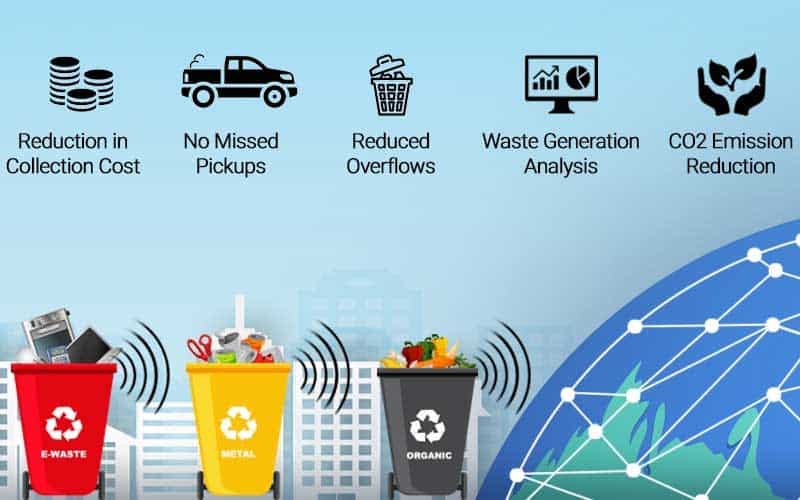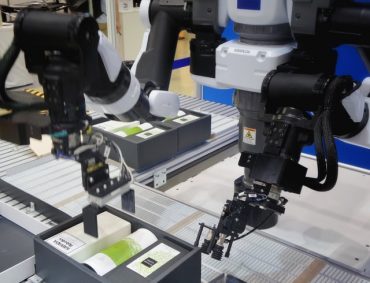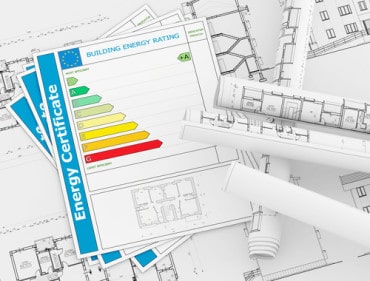
Using IoT and smart sensors, waste management companies can increase operational efficiency, cut costs, and enhance customer satisfaction.
The urban waste collection process is very complex and requires a significant amount of resources. City municipalities spend around $300 million per capita annually to collect and manage waste. Most high-income cities cover a fraction of this expense by charging fees to the citizens. The rest is compensated from the tax revenue, which creates a financial burden on the local governments.
Waste management companies and municipalities have barely used technological innovations to improve operational efficiency. What they’ve done so far is the improvement in route efficiencies. Even with excellent route optimization, the waste collection trucks must check the trash level of every dumpster physically. The manual process results in wastage of both time and money because trucks often visit dumpsters that don’t need emptying.

The growing use of the Internet of Things (IoT), smart devices and sensors, and machine-to-machine (M2M) connectivity has the potential to reduce unnecessary expenses that occur due to operational inefficiencies in trash collection processes.

For example, waste generation patterns differ by area or season; dumpsters do not need to be emptied on a fixed schedule. Visiting every empty dumpster increases unnecessary expenses. So, how does technological advancement help in improving waste collection efficiencies?
IoT: The Response to Inefficiencies
IoT-powered smart waste management solutions focus on improving the total efficiency of waste collection and recycling. The most common IoT use case in waste management is route optimization, which reduces fuel consumption while emptying the dumpsters throughout the city.
Most popular and feasible smart waste management solutions consist of endpoints (sensors), gateways, IoT platforms, and web and mobile applications. A sensor is attached to a dumpster to measure its fill level. Gateways play the role of bridging the gap between the IoT platform and sensor, sending data from the sensor to the cloud. Some edge-processing capable gateways are also needed. These devices process the raw data. The IoT platform does the job of transforming the raw data into information. Most of the time, the IoT platforms are hosted on clouds (private, as well as shared), but sometimes due to high data security requirement, they can be hosted on-premises, as well.
See also: What is Edge Computing? (Sponsored)
Different sensors can be used to perform different tasks. Ultrasonic level sensors are the most commonly used sensors in smart waste management IoT solutions. Other sensors include motion sensors, GPS sensors, light sensors, and vibration sensors to monitor various parameters, including location, temperature, and theft.
Benefits of using IoT in Smart Waste Management

Using such sensors and IoT platforms, companies and cuties can realize several advantages, including:
Reduction in collection costs: Smart dumpsters transmit their real-time fill level information to waste collectors. The IoT solution uses the data and selects optimum routes for waste collection trucks. This leads to a pickup process which doesn’t consider empty trash bins, saving fuel as well as manpower.
No missed pickups: Unlike traditional collection methods, the smart waste management process eliminates the overflowing of trash bins. When a trash bin is about to get full, the authorities are immediately notified. And collection trucks can be scheduled for a pickup even before the pre-scheduled time.
Waste generation analysis: Smart waste management is not just about route optimization. It is said that the real value of IoT lies in data analysis. Most of the IoT solutions available in the market are coupled with data analytics feature. Such capabilities can help waste management companies predict future waste generation.
CO2 emission reduction: There has been a lot of discussion and debate about the carbon footprint of waste management and recycling. Optimized routes lead to less fuel consumption, which ultimately reduces the carbon footprint, making the waste management process eco-friendlier.
See also:How Real-Time Data is Automating the Temperature-Controlled Supply Chain
Conclusion
Waste management services providers and cities can benefit from IoT-powered smart waste management solutions. Using the technology, waste management companies can increase their operational efficiency, cut costs, and enhance customer satisfaction by making sure no dumpster overflows. The implementation cost of wireless technologies is decreasing, and there are plenty of wireless technologies available in the market to make smart waste management solutions implementation possible. So, stop throwing cash in the trash and start saving time and money.




























